Explore the Fone Wing: Essential Insights for Kiteboarders
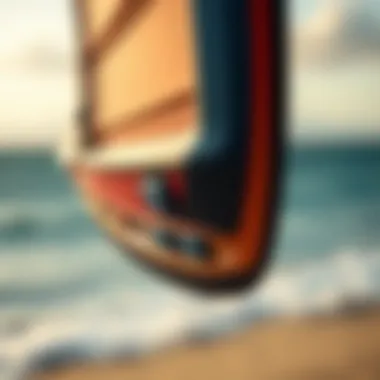
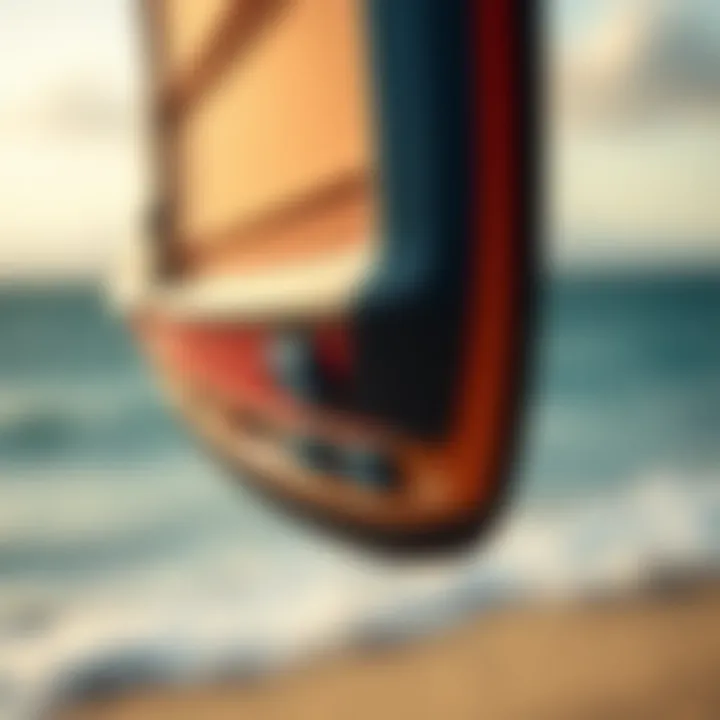
Intro
The emergence of the Fone Wing has ignited a revolution within the kiteboarding community, presenting a compelling blend of freedom and control that enthusiasts have yearned for. As kiteboarding continues to transform, the Fone Wing stands out for its distinctive design and flexibility, catering to both seasoned riders and novices alike. This guide not only illuminates the essential features and benefits of this innovative equipment but also provides practical insights into its maintenance, safety practices, and user experiences, enhancing the overall application in different riding conditions. Together, we will explore the various dimensions of the Fone Wing and how it fits into the broader tapestry of kiteboarding.
Equipment Insights
Latest Gear Reviews
When it comes to kiteboarding, having the right gear is akin to a chef possessing the finest knives in the kitchen. The Fone Wing has gained attention for its lightweight materials, which contribute to improved performance on the water. The design boasts high-quality construction that withstands rigorous use while delivering flexibility in movement.
For example, the Fone Strike is particularly noteworthy among the latest offerings. It showcases a sleek profile and a wide range of sizes, giving riders the ability to choose what fits their style. The inflation system on the Fone Strike is also intuitive, ensuring that setup is quick and trouble-free, whether you're hitched to the beach or yanking your board from the back of a truck.
Moreover, the wing’s rigidity combined with its distinctive shape helps maintain stability in gusty winds, providing a responsive feel that keeps you connected to the environment.
Essential Gear Maintenance
To prolong the lifespan of a Fone Wing, a keen eye on maintenance is vital. Here are some practical tips:
- Store it properly: When not in use, keep the wing in a cool, dry place away from direct sunlight to prevent material degradation.
- Regular inspections: Check for any wear and tear, particularly around seams and leading edges. Addressing small issues early can save significant costs down the line.
- Clean after use: Sand and saltwater can cause significant damage if left unchecked. A simple rinse with fresh water followed by thorough drying can protect your gear for many seasons.
By adhering to these tips, enthusiasts ensure they are poised to tackle any kiteboarding adventure without the worry of equipment failure.
Technique Exploration
Beginner Techniques
For those just getting their feet wet, mastering the basics with a Fone Wing can serve as a launchpad for more advanced maneuvers. Start on a lighter wind day where you can focus on control. Basic skills include:
- Getting up on the board: Utilize the wing to pull yourself upright from a sitting position on the water; this requires a good sense of balance and body positioning.
- Turning techniques: Practice using your body and wing to turn smoothly, learning how to tilt and angle yourself effectively to harness wind power.
These initial skills form the bedrock upon which more complex maneuvers can be built.
Advanced Maneuvers
As confidence grows, kiteboarders can explore advanced techniques, often drawing from freestyle or wave riding disciplines. Here’s what to explore:
- Jumps and aerial tricks: Leveraging the power of the wind, learning how to jump effectively can transition you into exciting aerial tricks that impress spectators.
- Downwind transitions: Mastering this will allow riders to glide efficiently in challenging conditions, showcasing control and skill.
Keep in mind that practicing in varying wind conditions and heights will ultimately broaden a rider’s abilities, enabling them to adapt and evolve their styles seamlessly.
The blend of thrill and skill required when working with a Fone Wing cannot be overstated. With every session, riders not only improve their physical abilities but also deepen their connection with the elements.
As we continue this journey into the Fone Wing, be prepared to unlock avenues of kiteboarding that you never thought possible, allowing you to push boundaries and explore new frontiers.
For more detailed information about kiteboarding and equipment, check out useful resources at Wikipedia or join discussions on Reddit.
In this fast-paced sport, remember that understanding the equipment and honing your skills go hand in hand—each session is a stepping stone towards greatness.
Prelude to the Fone Wing
In the ever-evolving world of water sports, the emergence of the Fone Wing has taken kiteboarding enthusiasts by storm. This section seeks to unveil the significance of the Fone Wing as a game-changer in kiteboarding, touching upon how it enhances the riding experience. Whether you're a seasoned pro or a curious newcomer, understanding the Fone Wing ensures you maximize your time on the water.
The Fone Wing is not just another piece of gear; it's an innovation that marries design with performance. With its ability to offer a balance of power and control, it is particularly important for those looking to refine their skills. As enthusiasts recognize its versatility, the popularity of the Fone Wing grows, making it a relevant topic to explore.
Understanding the Concept
To truly grasp the essence of the Fone Wing, one must first understand what makes it tick. At its core, the Fone Wing acts as a bridge between traditional kiteboarding and a newer, more agile approach. Unlike conventional kites that require a vast setup, the Fone Wing is designed for immediacy. Riders can get on the water quicker, without the cumbersome rigging process. The wing is meant to glide effortlessly across the surface, responding to the rider’s input with admirable sensitivity.
Many riders appreciate that the Fone Wing can be used in various conditions, from lighter winds to gustier weather. This flexibility allows users to adapt their riding style as necessary, making the Fone Wing not just a tool, but an enabler of exploration.
As enthusiasts experiment with the Fone Wing, they discover an array of techniques and tricks that were once reserved for advanced riders. The streamlined design helps in achieving lift and stability while also maintaining speed and maneuverability. In a nutshell, the Fone Wing is about enhancing freedom on the water, inviting riders to push their boundaries while still having fun.
Origins and Evolution
The origins of the Fone Wing trace back to a desire for innovation within the kiteboarding community. Initially conceived for specific conditions, the development of the Fone Wing can be likened to the evolution of sports equipment in general—always striving for better performance and user satisfaction. Over the years, kiteboarding has seen several transformations, yet none quite like the introduction of wings.
From its earliest versions, the Fone Wing has adapted based on rider feedback and technological advancements. Designers have incorporated lighter materials, improved aerodynamic aspects, and user-friendly features, constantly refining the experience. This journey of innovation is crucial, underscoring how rider experiences can shape the future of equipment design. As the Fone Wing continues to evolve, it stands as a testament to collaboration between engineers and enthusiasts.
Ultimately, the rise of the Fone Wing in the kiteboarding scene reflects broader trends in water sports, emphasizing accessibility and performance. For anyone involved in kiteboarding, knowing the background of the Fone Wing not only offers context but also enriches the overall appreciation for this exciting equipment.
Technical Specifications of the Fone Wing
When it comes to the Fone Wing, understanding the technical specifications is fundamental. These specs not only reveal the craftsmanship behind the wing but also highlight how these features enhance overall performance and rider experience. Without this knowledge, enthusiasts might miss out on appreciating what makes the Fone Wing distinct within the kiteboarding world. In this section, we break down design elements and performance metrics, allowing readers to grasp how each aspect contributes to the riding experience.
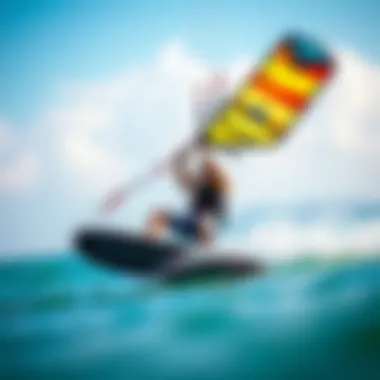
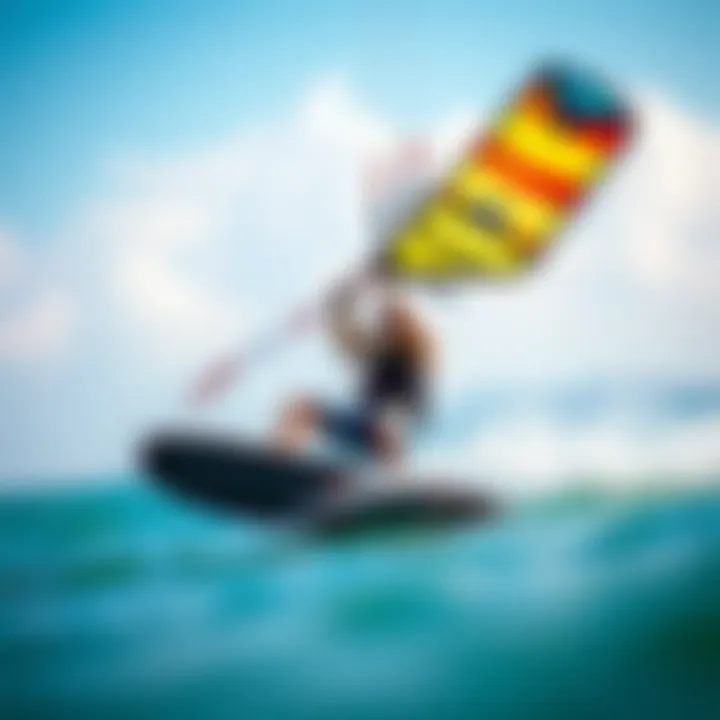
Design Features
Materials Used
The materials used in the construction of the Fone Wing are central to its performance durability. Crafted from ripstop nylon, these wings are not just lightweight; they’re resilient too. A key characteristic here is the reinforced stitching that adds strength without compromising on weight. This combination makes the Fone Wing a popular choice among kiteboarders who are often after gear that can withstand the rigors of challenging conditions.
Furthermore, the fabric’s UV resistance ensures longevity, making it a wise investment for anyone serious about their kiteboarding journey. But a potential downside is that lightweight materials can sometimes feel less sturdy in heavy winds, requiring riders to adapt their techniques.
Aerodynamic Design Elements
Aerodynamics play a pivotal role in ensuring efficiency and responsiveness in the air. The Fone Wing boasts a unique leading edge profile that reduces drag and increases lift. This key design feature means that riders can harness wind like a pro, making even the most challenging gusts manageable.
The wing's shape allows for smooth turns and fast tracking, ideal for those precision maneuvers. However, it’s worth noting that less experienced riders might find the handling to be a bit sensitive until they get accustomed.
Sizes and Variations
When it comes to sizing, the Fone Wing offers various options to cater to different rider preferences and conditions. This adaptability is crucial as it allows both light wind and high wind riders to find a model that fits their needs. A standout feature is the wing's adjustable size settings, which enable fine-tuning based on personal riding style and environmental conditions.
But the only catch here is that more options can sometimes overwhelm newcomers. Ensuring you select the right size involves careful consideration of your weight and skill level along with the conditions you’re expecting.
Performance Metrics
Wind Range
The wind range of the Fone Wing is noteworthy, standing out for its versatility. Capable of performing in winds as light as 8 knots, it also handles gusts up to 30 knots effectively. This range makes it a darling among kiteboarding enthusiasts, as it offers the flexibility to ride in a spectrum of conditions. The adaptability encourages riders to explore various spots and weather patterns without worrying if they'll have the right gear. The downside? Those extreme wind ranges can feel daunting for beginners, who might struggle to find that sweet spot between too little and too much wind.
Lift and Stability
Lift and stability are essential for any wing, and the Fone Wing excels in both areas. Thanks to its precise design, riders experience solid lift that allows for easy starting and sustained performance in the air. A crucial characteristic here is the balance managed through the wing's aspect ratio, which enhances stability during tricks and jumps.
However, it’s important to be mindful that a higher aspect ratio can also make the wing feel less responsive to tight turns, a point that might deter aggressive maneuvering enthusiasts.
Speed and Maneuverability
Speed and maneuverability are the final pieces of the puzzle. The Fone Wing is engineered for quick responses, which enables riders to change directions with ease. This aspect is especially beneficial for those looking to try advanced tricks or navigate crowded waters. The wing’s design facilitates rapid acceleration, making it a thrilling choice for adrenaline seekers.
Nevertheless, some users have found that with high speeds comes a level of unpredictability. It's essential for riders to develop a comfortable technique to adapt to these dynamics, so as not to become overwhelmed when pushing their limits.
Benefits of Using the Fone Wing
When exploring the Fone Wing, it’s paramount to understand the various benefits it brings to the table. This section is dedicated to highlighting the significant advantages kiteboarders experience while using this innovative equipment. Whether you're a seasoned rider or just dipping your toes into kiteboarding, the Fone Wing can greatly enhance your experience on the water.
Versatility in Riding Conditions
The Fone Wing stands out for its remarkable adaptability across different riding conditions. This piece of equipment doesn’t confine you to a specific weather pattern. On a day where the breeze is whispering softly, the Fone Wing allows for a smooth ride, harnessing even the gentlest winds. Conversely, with a gusty return from the sea, its design provides stability and control, allowing users to maintain a sense of security during intense sessions.
Riders often find themselves transitioning from inland lakes to coastal surf spots effortlessly. The distinctive design accommodates a range of skill levels; beginners can find their footing while experts push the limits of tricks and maneuvers. This adaptability means riders can seize every opportunity for adventure, regardless of changing weather.
- Freshwater vs Saltwater: The Fone Wing performs excellently in freshwater bodies, but it doesn't shy away from saltwater, proving its resilience and design versatility.
- Intermediary Skewing: Cyclones may not deter skilled riders as the Fone Wing's stability here is instrumental, lending itself nicely even during choppy seas.
Without a doubt, the ability to ride across different environments places the Fone Wing high on the must-have list for kiteboarding enthusiasts.
User Experience Comparisons
Understanding the user experience with the Fone Wing can provide insights into its overall performance and reliability. Many riders often share testimonials that reveal both strengths and weaknesses of using this wing.
When compared to traditional kites, here are some notable differences observed amongst users:
- Weight and Control: Riders frequently highlight the lighter weight of the Fone Wing, leading to easier handling and less fatigue during long sessions. The way it glides through the air offers a different feel, one that's welcomed, especially on longer journeys.
- Lift and Stability: Users report better lift with minimal effort required. With less pull for the same height achieved, there’s a noticeable ease in how the wing responds to a rider’s movements, offering an engaging experience without excessive strain.
- Efficiency: Many kiteboarders appreciate the efficiency that comes with fewer components. The Fone Wing requires less gear, making setup simpler and quicker, which allows more time on the water. Riders often mention how a straightforward setup enhances their experience, allowing them to maximize fun without unnecessary complications.
Despite the praises, some riders express concerns regarding high winds where control can be tricky. However, feedback indicates that once mastered, the Fone Wing offers a perfect blend of thrill and safety.
Comparative Analysis
The comparative analysis is a vital segment of this article, shedding light on how the Fone Wing stacks up against its competitors. Kiteboarding is an ever-evolving sport, with advancements in wing design and technology transforming the landscape. Understanding where the Fone Wing sits in relation to other wings is crucial for enthusiasts who want to make an informed choice. This section addresses specific elements, benefits, and considerations associated with the comparison, ultimately helping users appreciate the unique qualities of the Fone Wing.
Fone Wing vs Other Wings
When one juxtaposes the Fone Wing with other wings on the market, several distinguishing characteristics emerge. For starters, many kiteboarding enthusiasts have noted the unique lift and stability that the Fone Wing offers, especially in varied wind conditions. It can efficiently harness lighter winds, giving riders the confidence to explore new heights and angles. Riders often praise the responsiveness of this wing during sharp turns, making it an attractive choice for both beginners and seasoned pros alike.
In comparison, some traditional wings tend to lack this level of versatility. For instance, while brand X offers a wider span, it may not provide the same level of user control that the Fone Wing boasts. Another notable point is the durability; Fone has developed its wings using robust materials that withstand harsh conditions, outperforming some competitors who prioritize lightweight constructs at the cost of longevity.
"In my experience, the Fone Wing has a way of blending power with finesse," a local kiteboarding instructor remarked. "It’s not just about how fast you go; it’s about how well you navigate the water."
Moreover, the design of the Fone Wing encourages a more innovative riding style. While other wings might conform to conventional designs, Fone has taken a less rigid approach. That said, however, it does have a learning curve. Some users require a little time to grow accustomed to its handling, but they often find that the reward is a more dynamic experience.
Integrating the Wing with Kiteboarding Gear
Integrating the Fone Wing with existing kiteboarding equipment allows for an optimized riding experience, marrying innovative wing design with tried-and-true kiteboarding gear. This compatibility significantly enhances the overall utility of kiteboarding sessions.
Compatible Equipment
One of the primary aspects of compatible equipment is the ease of pairing the Fone Wing with various boards and setups. Riders can select from a range of boards that complement the wing's characteristics. For instance, pairing the Fone Wing with a hydrofoil board can elevate the experience, enabling smooth gliding over water even with less wind. This unique feature allows riders to engage with the ocean more freely.
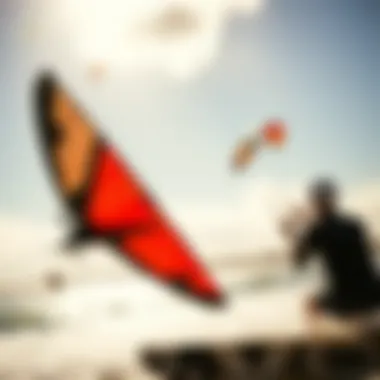
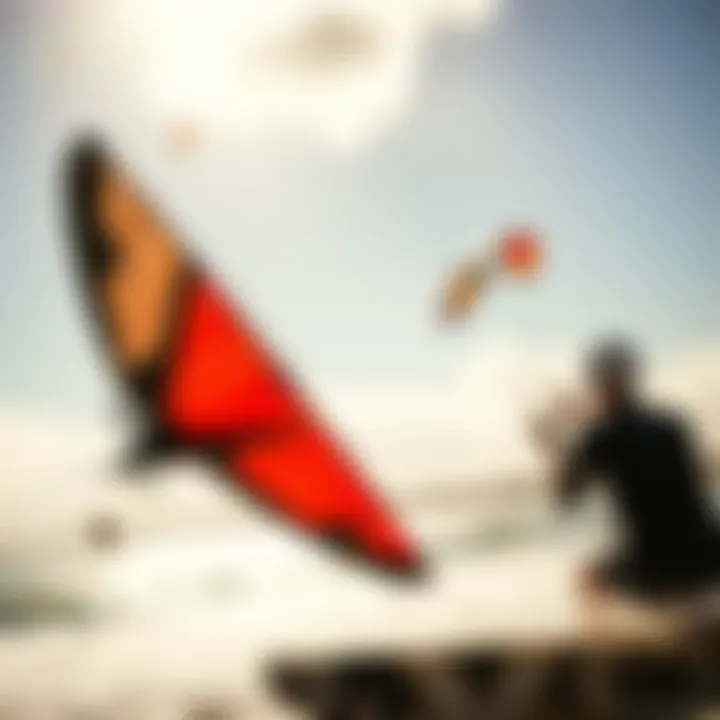
In addition, other gear, like harnesses from brand Y or specific lines, mesh well with the Fone Wing. This compatibility contributes significantly to user preference as many riders appreciate a system that feels whole and seamless. The flexibility to mix and match contributes to the Fone Wing's growing popularity among enthusiasts looking for balance in performance and comfort. However, it’s essential to ensure that all gear is suited to the rider's skill level.
Setup Tips
Setting up the Fone Wing correctly can make or break a ride. Key characteristics of effective setup tips include understanding wing tuning and positioning before taking off. A well-set wing allows for optimal air intake, essential for getting that extra lift.
When preparing the wing, pay special attention to the setup of the lines. Ensuring that they're free from tangles and knots can prevent catastrophic failures on the water. Additionally, practicing a pre-flight check can also serve as a beneficial habit. Adjusting the wing’s angle concerning the wind direction can enhance responsiveness, which is a popular suggestion among experienced riders. Have a look at forums on websites like reddit.com to gather personal setup tips from fellow kiteboarders about their experiences with the Fone Wing.
Ultimately, while integrating the Fone Wing with other kiteboarding equipment may present challenges initially, mastering the setup can open up a whole new world of riding potential.
User Insights and Testimonials
User insights and testimonials hold significant value in understanding the true impact of the Fone Wing in kiteboarding. They provide a lens through which potential users can gauge the real-life performance, durability, and overall satisfaction of those who have already adopted this innovative piece of equipment. The experiences shared by actual users can illuminate the nuances of what to expect, going beyond technical specifications and marketing claims. These insights play a crucial role in decision-making, especially for both novices and seasoned kiteboarders, seeking reliable gear that enhances their experience.
Users often share their personal journeys, highlighting specific gains—like improved maneuverability and enhanced control in various wind conditions. The community aspect of kiteboarding is also enriched through these testimonials, fostering a sense of camaraderie and shared expertise. When individuals express how the Fone Wing has transformed their riding, they make it easier for others to relate their own aspirations and challenges, leading to a broader, more informed perspective on the sport.
Positive Experiences Shared
Many kiteboarders have championed the Fone Wing for its versatility, claiming it adapts well to varied wind conditions and wave sizes. When the wind picks up, riders can feel the immediate difference in lift and stability. It’s not just about thrill rides; some have noted how the wing has helped them develop new tricks or refine their technique. These moments of triumph often resonate deeply, as they symbolize progress in what is, for many, a lifelong pursuit.
- Versatility in Riding Conditions: Users emphasize that they’ve enjoyed both calm days and gusty sessions without feeling out of control. One amateur kiteboarder shared how they confidently tackled a substantial jump for the first time using the Fone Wing, crediting the wing's design as pivotal to their success.
- Community Engagement: Riders also talk about how they’ve connected with others during group rides, sharing experiences, tips, and even suggesting adaptations based on their insights. This collective support breeds a richer kiteboarding culture, making it not just about the sport, but about the friendships formed along the way.
In sharing their stories, these users paint a compelling picture of the Fone Wing's capabilities, offering relatable instances that prospective users can envision for themselves.
Common Concerns Addressed
Despite all the praise, some users express concerns that are worth acknowledging. Common issues often revolve around initial learning curves, maintenance requirements, and the need for proper conditions to truly capitalize on the wing's design.
- Learning Curve: Some riders find that adapting to the Fone Wing’s handling characteristics takes practice. They describe awkward moments at first, where they had to reassess their techniques compared to traditional kiteboarding gear. Recommendations from other experienced riders—of gradually transitioning or practicing in controlled environments—tend to get repeated as useful strategies.
- Maintenance: Users need to commit to caring for their equipment, and a few testimonials have highlighted the effort involved in cleaning and storing the wing properly. Some had early instances of wear that could have been avoided with more careful treatment. This insight has led many to share tips for better maintenance practices, demonstrating the community's spirit of helpfulness.
By addressing these common concerns, testimonials provide a rounded view, ensuring that potential users can approach the Fone Wing with both excitement and realism. This honest feedback helps to strengthen trust in the kiteboarding community while encouraging further exploration and engagement.
Maintenance and Care for the Fone Wing
Taking care of your Fone Wing is like tending to a prized garden; it requires regular attention but yields rewarding results. Proper maintenance and care not only extend the lifespan of the wing but also enhance your overall kiteboarding experience. A well-maintained wing ensures optimal performance, safety, and enjoyment out on the water.
Cleaning and Storage
After an exhilarating day on the water, it's vital to clean your Fone Wing before stowing it away. Saltwater and sand can be harsh enemies. Here’s how to keep it in tip-top shape:
- Rinse Off: As soon as you're done riding, give the wing a thorough rinse with fresh water. This removes salt, sand, and other potential debris that can cause damage over time.
- Gentle Cleaning: For stubborn marks or stains, consider using a mild soap and soft cloth. Avoid using any abrasive materials, as they can scratch or harm the surface.
- Air Dry: Allow the wing to dry completely before storing. This prevents moisture from creating issues like mildew or mold, which can be a nightmare if left unattended.
Ensure you store your wing in a cool, dry place, away from direct sunlight. A quality bag, such as those made by Fone, provides protection from dust and accidental damage during transport.
Regular Inspections
Regular inspections are crucial for identifying potential issues before they escalate. Just like a keen chef tastes their dish while cooking, inspecting your wing can save you from unexpected surprises on the water.
Identifying Wear and Tear
Wear and tear is part and parcel of using any equipment, especially in extreme conditions. Being vigilant about identifying signs of wear can enhance your experience and keep safety at the forefront. Key areas to check include:
- Leading Edge: Look for cuts or punctures. This is where efficiency and stability can be compromised if damage occurs.
- Straps and Handles: Ensure that all straps are intact and secure. Loose or frayed straps can lead to unfortunate mishaps.
- Seams and Stitching: Inspect the seams for any signs of fraying or breaking. These fragile parts carry the load and should remain intact.
Regular checks can save you from costly repairs later and enhance overall performance.
Repairing Minor Damages
If you spot damage, don’t panic! Most minor issues are relatively easy to fix, and knowing how to handle them can prolong your wing's life. A basic repair kit is a good friend to have:
- Puncture Kits: These kits usually come with patches that are easy to apply. Following the instructions carefully can help restore your wing without hassle.
- DIY Solutions: For small issues, such as minor tears or frayed seams, sewing them up using a strong outdoor thread can be a quick yet effective fix.
- Professional Help: For bigger problems, consider consulting experts. Brands like Fone often provide repair services ensuring your wing gets the care it needs.
Remember, putting a little time into maintenance can lead to countless hours of enjoyment on the water. A diligent kiteboarder knows that taking care of your equipment is half the battle in the pursuit of staying safe and having fun.
Safety Considerations
Safety is paramount in any adventure sport, and kiteboarding is no exception. The thrill of gliding over water, harnessing the power of wind, is exhilarating, but it comes with risks if safety protocols aren't followed. Understanding safety measures concerning the Fone Wing not only protects the rider but also enhances the overall experience. By adopting safety practices, kiteboarders can enjoy their ride while minimizing the chances of accidents. This section will delve into pre-ride safety checks and best practices during riding to help enthusiasts be well prepared.
Pre-Ride Safety Checks
Before taking to the water, carrying out a thorough safety check of the gear, especially the Fone Wing, is crucial. Ensuring that everything is in working order can prevent mishaps that might occur due to equipment failure. Here are some essential checks to keep in mind:
- Inspect the Wing: Ensure that there are no tears or holes in the fabric. A small imperfection can lead to significant issues once in the air.
- Lines and Connections: Look for any frays or damaged lines. Make sure all connections are secure, as loose attachments can be dangerous at high speeds.
- Harness and Safety System: Check that the harness fits well and that the quick release system operates without obstruction.
- Weather Conditions: Always review the wind speed and direction. The Fone Wing performs best within specified wind ranges.
- Personal Safety Gear: Don your life vest and helmet before heading out. It's easy to overlook personal equipment in the excitement of kiting.


By scrupulously conducting these checks, a kiteboarder sets the stage for a safer riding experience.
Best Practices while Riding
While out on the water, maintaining a safe riding style is vital for both the rider and others around them. Following some best practices can foster a safer environment:
- Stay Aware of Surroundings: Constantly keep an eye on fellow kiters, swimmers, and any obstacles in the water. An alert rider can react quickly to avoid potential collisions.
- Use Hand Signals: Communicate with other riders using hand signals to indicate turns, jumps, or distress. Being clear about your intentions can prevent accidents in crowded areas.
- Avoid Crowded Spaces: If possible, steer clear of congested kiteboarding spots, especially during peak times. A little distance can make a world of difference.
- Know When to Call It a Day: If conditions change or if you feel fatigued, don’t push your luck. It's better to pack up and ride another day than to tempt fate.
"Safety isn’t just about gear. It’s a mindset, an approach that allows adventure without unnecessary risk."
Incorporating these safety practices while riding constitutes good sense for riders of any skill level. The Fone Wing allows for exciting flying experiences, but these should always be balanced with prudent safety measures.
Adapting to Advanced Techniques with the Fone Wing
The world of kiteboarding is ever-evolving, and the Fone Wing offers unique avenues for progression in riding skills. This section dives into how riders can adapt to advanced techniques while using the Fone Wing, emphasizing the benefits and important considerations involved. Moving beyond the basics, kiteboarders are empowered to explore an array of maneuvers that not only enhance their experience but contribute to improved performance on the water.
Learning Progressions
As with any sport, advancing your skills with the Fone Wing follows a systematic learning progression. Here are some key aspects to consider:
- Foundation Skills: Before tackling advanced techniques, ensure a solid understanding of basic wing control and body positioning. Familiarity with the wind and responsive riding is crucial.
- Progressive Levels: Start with semi-advanced techniques, such as carving and transitioning between foot positions. Gradually move to more complex moves like jumps and aerial spins.
- Consistency: Repeat and refine your techniques. It's normal for new skills to feel awkward at first. Practice consistently to build muscle memory and confidence.
- Feedback Loops: Utilize video analysis or seek advice from more experienced riders. Watching your form can highlight areas for improvement and enhance your learning curve.
Utilizing the Fone Wing effectively means understanding its unique handling characteristics, which can be different from traditional kiteboarding. The lighter pull of the Fone Wing allows for quicker reflexes and maneuverability, making it easier to dive into more intricate movements.
Participating in Events and Competitions
For those looking to take their skills further, participating in events and competitions can be a thrilling avenue. Engaging in the kiteboarding community not only sparks motivation but exposes you to a wider range of techniques and kinetics.
- Event Formats: Competitions range from freestyle to racing. Each format demands different skills; thus, understanding event requirements can help you tailor your practice.
- Networking: Engaging at competitions creates opportunities to meet fellow enthusiasts and industry experts. These connections could lead to valuable insights, tricks, or collaborations that enrich your riding experience.
- Performance Under Pressure: Competing helps develop resilience and the ability to perform under pressure. This can be crucial in personal growth as a rider; handling adrenaline and distraction teaches valuable lessons that extend beyond the sport.
"A little competition can go a long way in pushing the boundaries of your skills. It can turn the thrill of kiteboarding into an art form."
- Set Personal Goals: Whether to simply participate, win, or showcase specific techniques, having clear goals can keep you focused and motivated.
- Communal Learning: Many events include workshops or seminars where seasoned kiteboarders impart knowledge and conduct hands-on sessions. These gatherings provide ample learning opportunities to adapt advanced techniques.
By embracing these avenues, the Fone Wing not only becomes a tool but a gateway into a vibrant community of riders. The challenge of advancement can seem daunting, but the thrill of mastering new techniques and competing can invigorate your passion for kiteboarding. The Fone Wing, with its adaptability, makes this journey exciting and dynamic, opening up a world of possibilities for enthusiasts who seek more than just a ride.
Future Developments in Wing Technology
As kiteboarding continues to gain traction, particularly with the growing popularity of wings like the Fone Wing, it’s imperative to stay abreast of advancements in wing technology. The allure of riding on water propelled by wind draws many into this thrilling sport. Future developments in wing technology will not only enhance performance but also improve safety and accessibility, paving the way for both new riders and seasoned enthusiasts to enjoy the thrill of kiteboarding.
Innovation Trends in Equipment Design
In recent years, equipment design has moved forward by leaps and bounds, primarily driven by advances in materials and aerodynamics. Currently, manufacturers are investigating lightweight composite materials that not only improve the overall durability of wings but also enhance their responsiveness in varying wind conditions. For example, the integration of ripstop fabrics with lighter frames allows for a more resilient wing that maintains its shape even in challenging weather.
Here are some noteworthy trends:
- Responsive Materials: The progression toward responsive materials enables wings to adapt to different wind conditions more seamlessly. They react quickly to rider movements, giving more control while performing tricks or navigating through rough waters.
- Increased Stability: Innovations in wing design focus on maximizing stability while minimizing drag. This includes shaping the wing's profile to ensure it cuts through the air more effectively, which allows for quicker accelerations and smoother rides.
- Modular Designs: Some companies are exploring modular wing systems that allow users to customize their setups depending on conditions. This could include interchangeable struts or adjustable wing spans to cater to varying wind strengths and rider preferences.
"Innovation is not just about technology; it’s about understanding the rider’s experience and enhancing it through well-designed equipment."
Sustainability in Manufacturing
As the kiteboarding industry evolves, sustainability is increasingly taking center stage. This focuses not only on how products perform but also considers the environmental footprint of their production. There’s a rising awareness that kiteboarding equipment should be made with materials that lessen environmental impact.
- Eco-friendly Materials: New design trends see the use of recyclable materials which don’t compromise on performance. For instance, brands are exploring bio-based resins or recycled fibers in the production of wings.
- Reduced Waste Production: In manufacturing processes, companies are embracing templates that ensure minimal off-cuts and waste. There’s a concerted push towards producing wings in a way that maximizes material use and minimizes environmental footprint.
- Production Transparency: Companies are becoming more transparent about their supply chains, allowing consumers to make informed decisions. Understanding how and where products are made is vital for environmentally conscious riders.
Overall, the future developments in wing technology signal promising change in the kiteboarding landscape. With enhanced designs and a strong focus on sustainability, the Fone Wing and its counterparts are set to elevate the sport to new heights in both performance and environmental responsibility. As kiteboarders, being part of this evolution means not only enjoying the thrill of the ride, but also championing innovation in ways that respect our environment.
Culmination
As we approach the end of our exploration into the Fone Wing, it becomes evident that this innovative piece of equipment is not just a passing trend in the world of kiteboarding, but rather a significant advancement that deserves serious attention. This article has shed light on various aspects of the Fone Wing—from its cutting-edge design and technical specifications to the invaluable user experiences and safety precautions that come into play.
Recap of Key Insights
The Fone Wing stands out in its versatility, allowing riders to adapt seamlessly to various wind conditions. Its aerodynamic qualities enhance not only speed but stability, ensuring that both novices and seasoned kiteboarders can find success on the water. The material construction is thoughtfully curated for durability while keeping an eye on performance metrics, such as lift and maneuverability.
Additionally, insights from fellow users have painted a vivid picture of the overall experience—with joy in mastering both recreational and competitive aspects. Concerns around maintenance and safety have also been adeptly addressed, reminding us that a little care goes a long way in prolonging the life of any wing.
It’s worth noting that the innovations in wing technology continually shape the sport, making it essential to stay updated with ongoing developments. The balance of performance and user-friendly design is something every kiteboarder can appreciate.
Encouragement to Explore Kiteboarding Further
For those enticed by the gentle sway of the sea breeze and the thrill of the waves, diving deeper into kiteboarding with the Fone Wing could certainly broaden your horizons. The adaptability of this gear lends itself to various styles, whether you are just dipping your toes or looking to become a seasoned pro. Consider participating in local events or workshops; they can be a great way to network, learn further techniques, and even share your own compelling experiences!
Ultimately, kiteboarding isn't just about mastering the wind; it's about embracing a lifestyle filled with challenges, learning, and the sheer joy of riding. So, grab hold of that Fone Wing, find a suitable spot, and let the gusts of air guide your adventures.
"Kiteboarding opens the door not just to a sport, but to a vibrant community that thrives on support and shared passion."
For further reading and insights into kiteboarding and winging, check out resources on Kiteboarding Association and join the discussions on Reddit.







